The next-gen MacBook Pro with Retina Display Review
by Anand Lal Shimpi on June 23, 2012 4:14 AM EST- Posted in
- Mac
- Apple
- MacBook Pro
- Laptops
- Notebooks
The King of All Notebook Displays
For years Apple has been shipping some of the best displays in consumer notebooks, but the MacBook Pro’s Retina Display is in a league of its own. While I never liked the phrase “painted on” in reference to the iPad and iPhone Retina Displays, that’s the best way I can describe the effect the MacBook Pro’s Retina Display has on me. Text really does look painted on. The effect is really the result of two things.
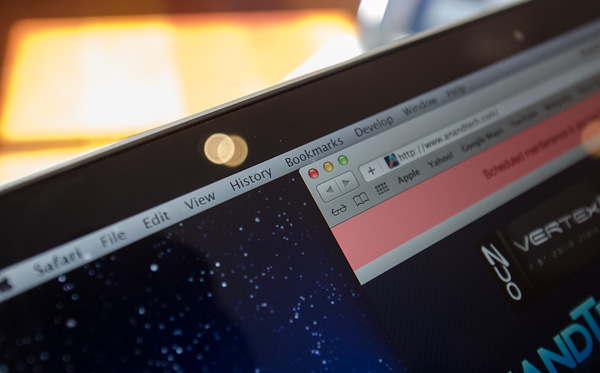
The first is Apple’s removal of its cover glass. LCD panels aren’t particularly attractive, they are ugly squares composed of two pieces of glass and a number of filters/polarizers. To hide the ugly edges, display makers wrap bezels around the display. Most people aren’t fond of bezels so next came a ton of effort to minimize bezel size. An alternative is to simply place a third piece of glass over the entire LCD assembly and make it look as if the bezel and LCD panel are integrated. This outermost layer is known as a cover glass and is what Apple uses on all of its glossy displays. If you’ve ever taken apart a Cinema/Thunderbolt Display or a newer iMac you’ll know that the cover glass is literally just a piece of glass that you have to remove with some suction cups.
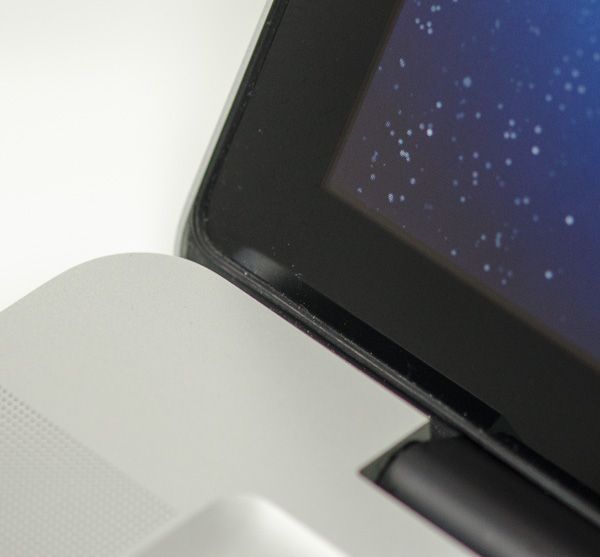
Non-Retina MacBook Pro, notice the gap between the outermost LCD glass and the cover glass
The MacBook Pro’s Retina Display does away with the cover glass and instead uses a fairly unique LCD assembly. There are still two pieces of glass but the outermost glass is actually a different size and shape - it integrates a bezel. By integrating the bezel into the outermost glass in the LCD stack you get the same effect as a cover glass but without the added reflections it introduces.
You also limit the possibility of dust getting trapped between the cover glass and the LCD. The danger is that you no longer have a protective piece of glass in front of your expensive new LCD. If you scratch the display you're scratching the LCD itself. While this has been true for conventional matte displays for a while, it's worth mentioning if you're used to Apple's glossy displays where you did have that added security layer.
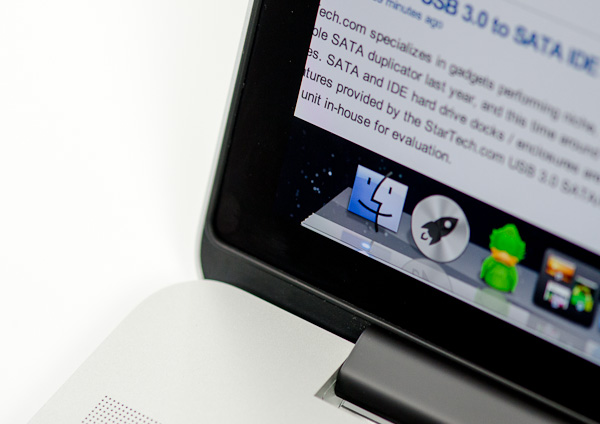
The MacBook Pro with Retina Display, no gap, no cover glass
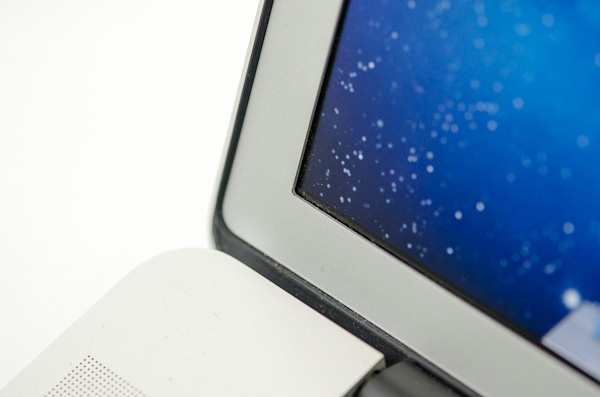
The 2011 MacBook Pro with High-Res Matte display option, no cover glass, top bezel

From left to right: 2010 High Res Glossy MBP, 2012 rMBP, 2011 High Res Matte MBP
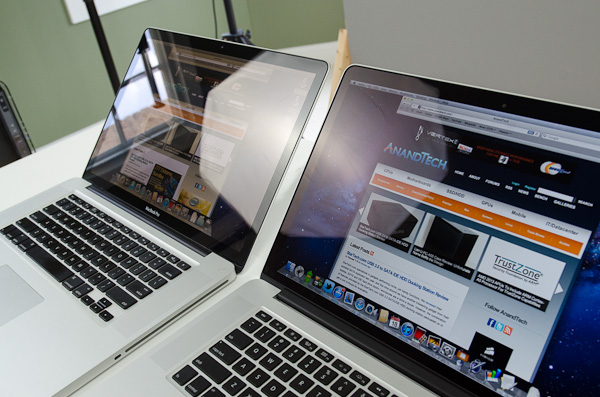
Glare handling indoors - 2011 High Res, Glossy MBP (left) vs 2012 rMBP (right)
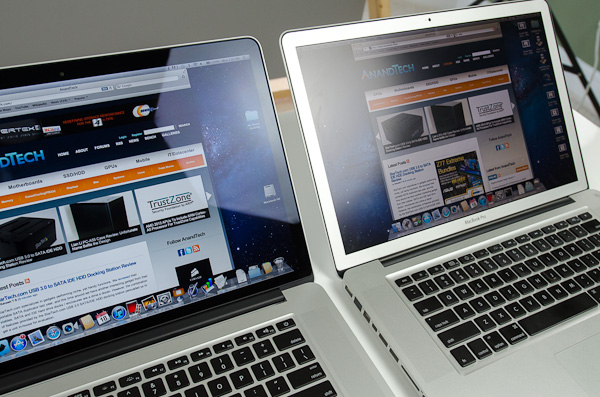
Glare handling indoors - 2012 rMBP (left) vs. 2011 High Res, Matte MBP (right)
The Retina Display is also obviously an extremely high resolution panel at 2880 x 1800. Note that this is 44.6% more pixels than Apple’s 27-inch Thunderbolt Display, and 26.6% more pixels than the 30-inch panels that we’ve loved for so long - all in a 15.4-inch notebook display.
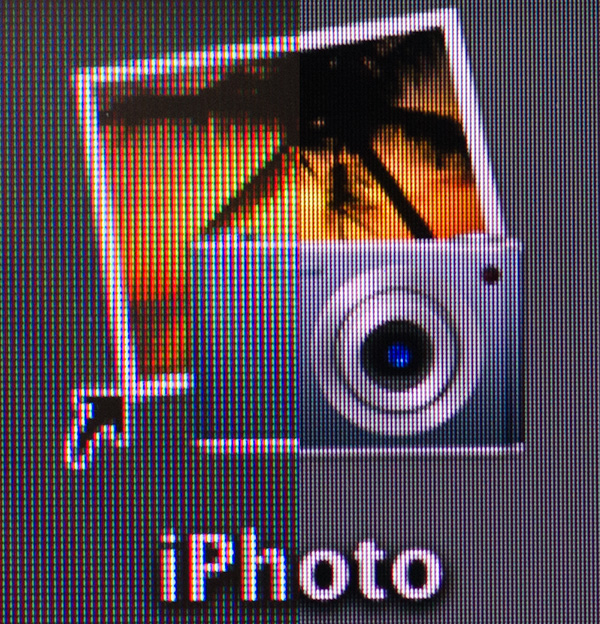
An iPhoto shortcut, High Res 2011 MBP (left) vs. Retina Display MBP (right)
At 220 pixels per inch it’s easily the highest density consumer notebook panel shipping today. At normal viewing distances and even with my face closer than I’m comfortable putting it I simply cannot discern individual pixels.
It’s the combination of these two elements, the removal of the cover glass and the insanely high pixel density that makes everything from text to UI elements just look painted on the new Retina Display. And the effect is gorgeous. I’ve never seen a prettier panel and it’s actually ruined me for pretty much all other displays, notebook and desktop.
While I can appreciate the iPad’s Retina Display, the impact from the MacBook Pro’s display is even more significant. Perhaps it’s because I still spend so much time working on a standard, non-tablet display, but I’m far more excited about this display than anything else Apple has delivered under the Retina moniker.
It’s not just pixel density that Apple has to offer here. Similar to its Retina Displays in the iPhone and iPad, the MacBook Pro’s Retina panel ditches TN in favor of IPS technology. The result is an incredible improvement in viewing angles. On a notebook I don’t spend a lot of time viewing it from far left/right angles, although I see the benefit when I’ve got others huddled around my display. Here the panel performs admirably - you lose brightness at far left/right angles but there’s no perceivable color shift. In fact, the painted on effect is even more impressive at these far left/right viewing angles.
For a single user however the more impressive characteristic is just how good the display looks at vertically off-center angles. I wrote much of the initial parts of this review while on an airplane in coach, which with a 15-inch notebook on my lap means I’m going to be looking at the display at a weird angle to begin with. The thinner rMBP doesn’t do enough to make the airplane usage model any better if the person in front of you decides to recline, but the IPS panel does make the display perfectly usable at the off-center angle you’ll inevitably have to deal with.
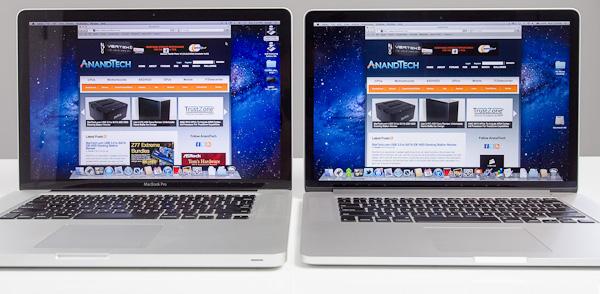
2010 High Res, Glossy MBP (left) vs. 2012 rMBP (right)
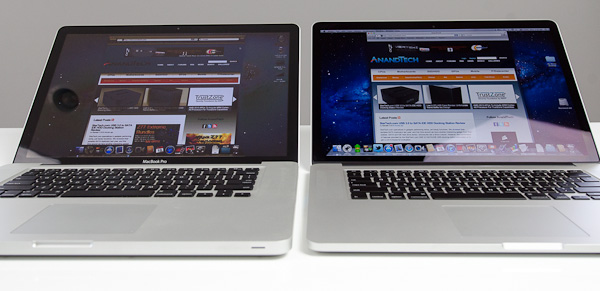
Hello colorshift!
2010 High Res, Glossy MBP (left) vs. 2012 rMBP (right)


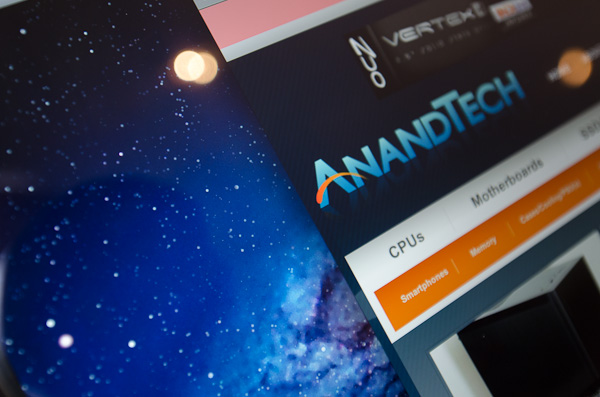
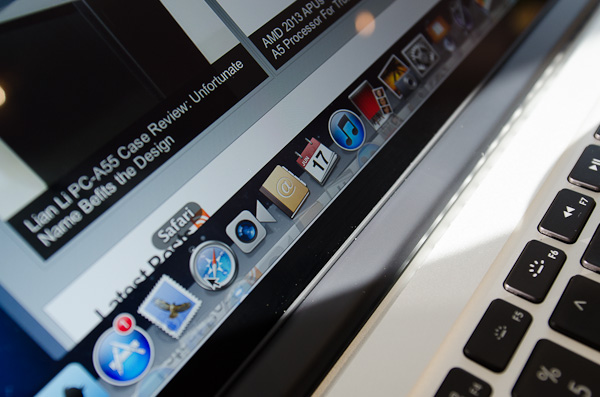
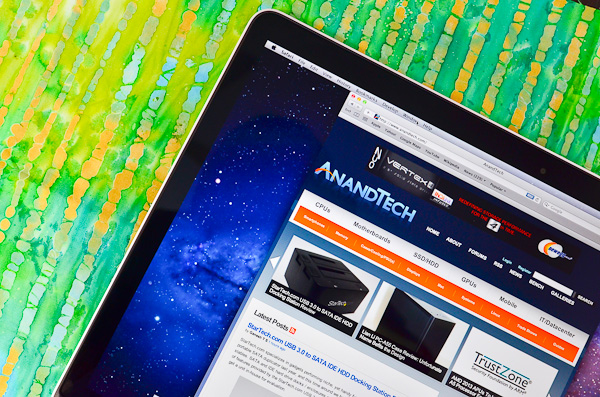
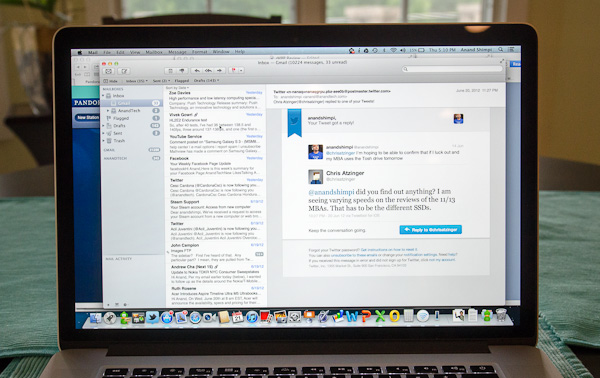
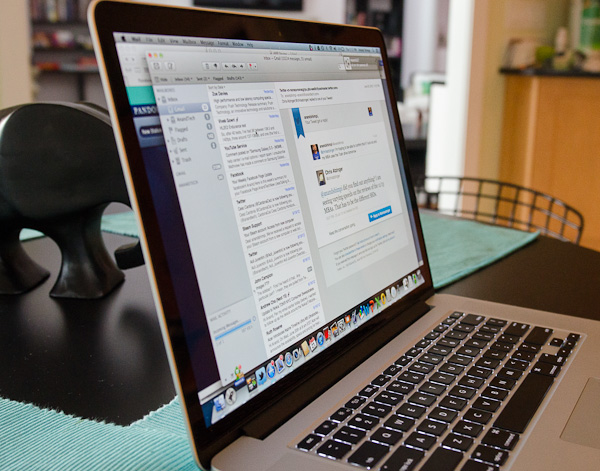








471 Comments
View All Comments
ciparis - Saturday, June 23, 2012 - link
1920x1200 wouldn't be nearly enough -- which is the entire point of doubling that resolution.Lepton87 - Saturday, June 23, 2012 - link
You haven't provided any arguments which supports your claim. 15'' 1920x1200 has already so small pixels that your eyes can't see them individually. So it's already an retina display and once we hit retina, what good does adding additional pixels? It certainly has many disadvantages like less smoothness in the OS, needless workload on the GPU and CPU.Lepton87 - Saturday, June 23, 2012 - link
No they didn't double that resolution. According to what apple calls "retina" displays that res would be good enough on a 15'' screen to receive that monicker,nickersonm - Saturday, June 23, 2012 - link
It's so they can just double resolutions instead of supporting arbitrary DPI scaling.seapeople - Sunday, June 24, 2012 - link
The high resolution display offers a number of benefits over 1920x1200:1. You get crystal clear "native quality" 1440x900 resolution, allowing you to play modern games without the display looking fuzzy (as it would if you had to run a 1920x1200 panel at a lower resolution).
2. If your usage, eyesight, or user changes, you can set the panel to multiple effective resolutions and have it still look clear. Gone are the days of gramps setting the panel to 1024x768 and having it look about as clear as 1960's video of the moon landing.
3. If you sit closer to the screen (such as 12-15") you can easily notice pixelation/text antialiasing on a 1920x1200 panel this size. Someone using the laptop while lying on their stomach could easily be at this distance and would thus benefit directly from the increased resolution.
name99 - Saturday, June 23, 2012 - link
"There are a lot of filtering operations at work when doing all of this resolution scaling, so rather than compromise user experience Apple simply wrote its own default filtering routines. Apple’s obsessive attention to detail really made it possible to pull all of this off. It’s just insane to think about."What's insane to think about is that the GPU vendors were not ready for this. I mean, guys, you have ONE JOB to perform, and you don't do it properly?
The phrase "skating to where the puck will be, not where it is" is thrown around a lot, but honestly --- there appears to be one computer company that has its act together (maybe we can add Intel and ARM in) and a whole lot of wannabe's pining for 1995 when life was simple and they didn't have to work too hard.
ciparis - Saturday, June 23, 2012 - link
I wouldn't go so far as to call it a failure to do their job. GPUs are planned way in advance of production. This resolution makes sense for Apple because it allows a very developer-friendly simple doubling of asset resolutions; it's not something AMD/Nvidia would have known back when they would have needed to know it.kepler - Saturday, June 23, 2012 - link
Hardware compatibility with Linux? I'm waiting for an 11 inch 1080p Zenbook, but I can be persuaded to grab one of these (...maybe).I'm not impressed with what you get for the price, short of the screen. That is all I care about, the rest is run of the mill.
ciparis - Saturday, June 23, 2012 - link
You mean software compatibility. It's Linux; it's up to the users to write the drivers for this.DeciusStrabo - Sunday, June 24, 2012 - link
As long as Optimus doesn't work I would stay away from laptops using it (MBPR and Zenbook UX32VD).